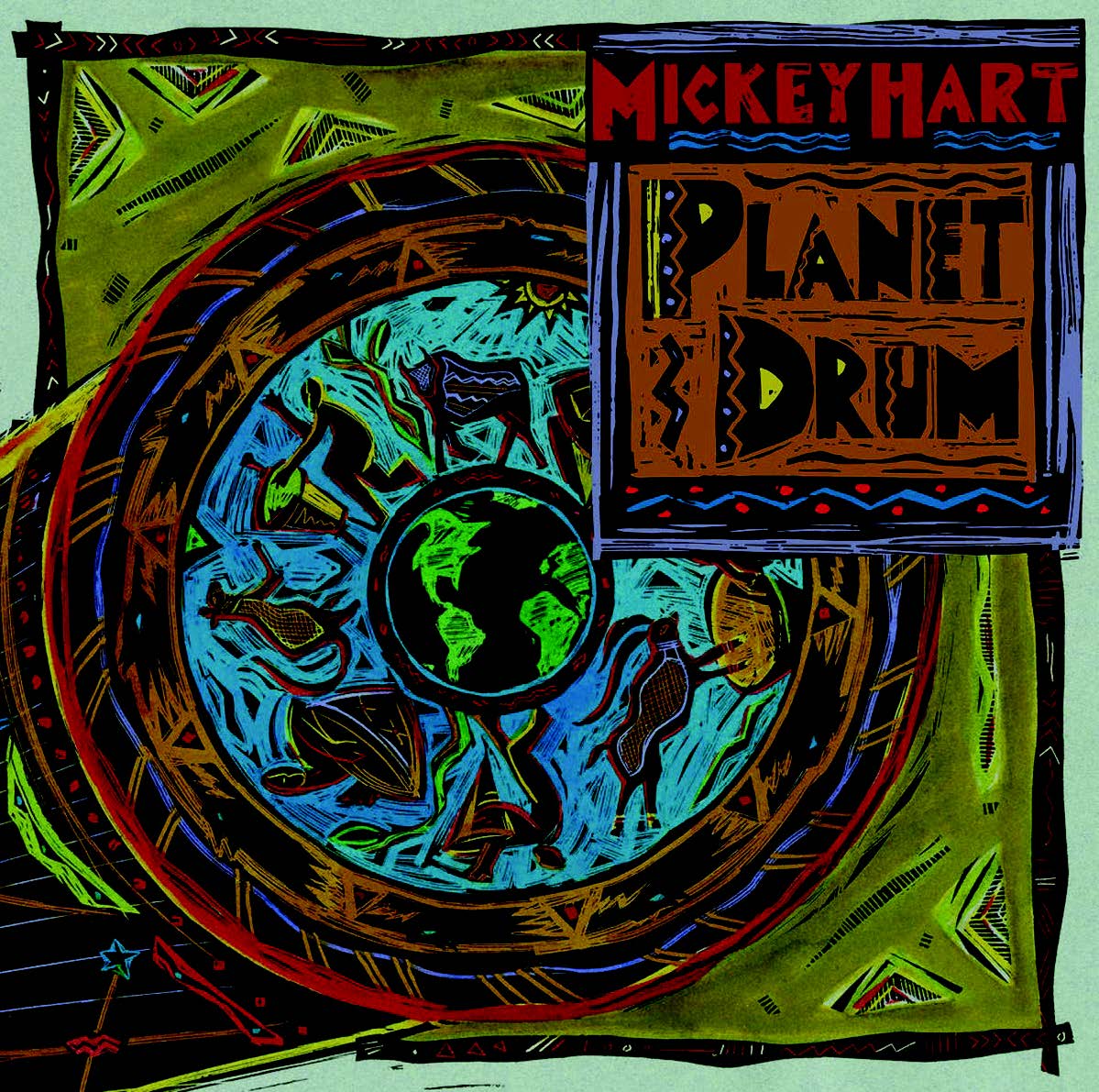Mickey Hart Revisits _Planet Drum_

Milestones come and go, but since we’re in the Grateful Dead frame of mind these days, there’s one I wish to call to your attention.
Actually, there’s plenty happening in Dead World from the third go-round of Dead & Company and the official release of the Long Strange Trip documentary (both of which we cover in the April_May issue) through the return of the Betty Boards to the vaults (more on that to come).
But what I would like to emphasize is an album anniversary. No, not the 50th of the eponymous Grateful Dead release. (But be sure to check out the newly remastered version, which comes with bonus live audio from July 29 and 30, 1966.) Instead, I wish to hail the 25th anniversary of the Planet Drum album.
Yes, technically, the silver anniversary took place this past fall but, like any good celebration, there’s no reason the good times can’t keep on coming.
On Planet Drum, Mickey Hart drew together an ensemble of the world’s greatest percussionists: Zakir Hussain and T.H. “Vikku” Vinayakram (from India), Sikiru Adepoju and Babatunde Olatunji (Nigeria), Airto Moreira (Brazil, along with vocalist Flora Purim), and Giovanni Hidalgo and Frank Colón (Puerto Rico).
Not only did Planet Drum win the Grammy Award for Best World Music Album in the first year that award was given, but it also topped the Billboard World Music Album charts (and remained there for 26 weeks!) at a time when people really started to engage the sounds of the globe in a whole new way.
To that end, I asked Mickey Hart to reflect on his intentions and the record’s legacy:
“These were the best—the crème de la crème of rhythmists all in one room—just playing with no agenda. That was how I wanted it, and it worked out perfectly. Almost everything was a first take! We didn’t even have to say ‘Take 2’ or anything—we just played. It was magic; that was the thing I think people hear in Planet Drum.
“It was just so smooth, so magical, so giving, and it was percussion. Not like it used to be, like percussion ‘bash bash bang bang boom boom.’ This was romancing of the drum. I saw it as a soft side, which holds so much emotion, as opposed to the way we normally play drums, like in a rock-and-roll setting where we really play them hard—most of the time too hard! So this was a bunch of skilled professionals coming together from different genres, and I think that’s the reason that it resonated so much, because it was a metaphor about how people can come together and play.
“A lot of people say that this was the catalyst for the women and children who are now drumming, the community RhythmFests and the drum groups that have formed. Remember, before this, everyone was playing a drum set, and that wasn’t the real main feature of Planet Drum. It was mostly the world’s drumming: drums from around the world, and the sounds they make and how they mix.
“One of the big things was telling the kids that it was OK not to play a drum set. That’s an American instrument. Our invention the American drum set—’the traps,’ they call them—is one of our best, our truest. But still, we’ve heard so much of all that, I thought that this would be a time to turn to our love of hand drums. And then of course, Remo and all of the manufacturers started making djembes, so the djembes almost became like the guitar of the ‘80s or the ‘90s.
“Music is a universal rhythm, for sure. It showed a lot of that. It said, ‘You can do this, too, and it belongs in any kind of music you want it to belong in.’ So, it was a very magical, powerful rhythmic statement.”
Hear! Hear!



















